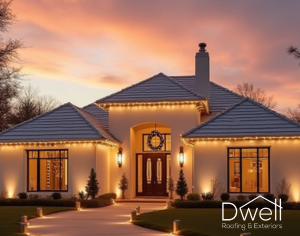How Poor Ventilation Can Damage Your Roof and Increase Energy Costs
A well-maintained roof does more than protect your home from the elements; it also plays a crucial role in regulating your home’s temperature and energy efficiency. However, many homeowners overlook one critical aspect: roof ventilation. Poor ventilation might not be visible, but it can silently cause damage to your roof and increase your energy bills over time. Let’s dive into why proper roof ventilation is so important and how it can save you money in the long run.
What is Roof Ventilation, and Why Does It Matter?
Roof ventilation is a system that allows air to flow through your attic space, keeping it cool in the summer and dry in the winter. Proper ventilation involves installing vents (like ridge vents, soffit vents, and attic fans) that facilitate the natural movement of air, preventing moisture and heat buildup.
Without adequate ventilation, your attic can become a hot, damp space that gradually damages your roof and impacts the energy efficiency of your home. In Texas, where extreme heat is common, having a well-ventilated roof can be the difference between a comfortable, efficient home and one that constantly battles high energy bills.
Signs Your Roof May Have Ventilation Issues
You might not immediately notice poor ventilation, but there are telltale signs to look out for:
- Hot Attic Temperatures: If your attic feels like a sauna, it’s a sign that heat is trapped, which can eventually damage roof shingles and your HVAC system.
- Mold or Mildew Growth: Excess moisture in the attic can lead to mold, which can spread to other parts of your home and affect indoor air quality.
- Ice Dams in Winter: In colder months, poor ventilation can cause ice dams, which damage shingles and gutters.
- High Energy Bills: If your cooling or heating costs have spiked, it might be due to poor attic ventilation causing your HVAC system to work harder.
How Poor Ventilation Can Lead to Roof Damage
Poor ventilation doesn’t just make your home uncomfortable—it can also significantly shorten the lifespan of your roof. Here’s how:
- Heat Damage to Shingles: During hot Texas summers, trapped heat in the attic can reach temperatures of over 150°F. This intense heat can warp shingles, cause them to curl, and even lead to premature aging.
- Moisture Damage to Roof Structure: Without proper airflow, moisture from everyday activities (like cooking, showering, or doing laundry) can seep into your attic. Over time, this moisture can weaken the roof decking, lead to mold growth, and cause structural damage.
- Warping and Rotting of Roof Materials: Moisture combined with high heat creates a perfect storm for wood rot, which can weaken beams and other roof components, potentially leading to costly repairs.
The Impact on Energy Efficiency
When your attic is too hot or too humid, it forces your air conditioning system to work overtime to keep your home cool. Similarly, in winter, poor ventilation can trap heat, causing inconsistent indoor temperatures. This increased workload on your HVAC system results in higher energy bills and a reduced lifespan for your equipment.
In Texas, where temperatures can swing from sweltering summers to chilly winters, ensuring proper roof ventilation is a key factor in maintaining an energy-efficient home. Addressing ventilation issues can save you hundreds of dollars annually on your energy bills.
Steps Homeowners Can Take to Improve Roof Ventilation
Proper roof ventilation is essential for keeping your home cool, comfortable, and protected. Here are some steps homeowners can take:
- Inspect Attic Insulation: Ensure your attic is well-insulated, but also make sure that insulation doesn’t block any vents.
- Check for Obstructions: Clear any blockages around soffit and ridge vents to allow for proper airflow.
- Schedule a Professional Inspection: An annual roof inspection by professionals, like our team at Dwell Roofing, can identify ventilation issues before they become costly problems.
- Consider Installing Attic Fans: If natural ventilation isn’t enough, powered attic fans can help improve airflow and reduce heat buildup.
Conclusion
Roof ventilation might not be the most exciting home improvement topic, but it’s essential for the longevity of your roof and the efficiency of your home. By ensuring your roof is properly ventilated, you can prevent damage, extend its lifespan, and lower your energy bills—especially in Texas, where temperatures can be extreme.
At Dwell Roofing, we specialize in roof inspections, repairs, and ventilation solutions. Contact us today to schedule a free inspection and see how we can help you save money while protecting your biggest investment—your home.





